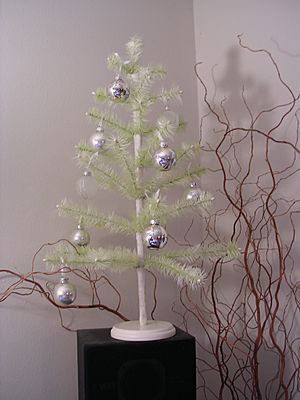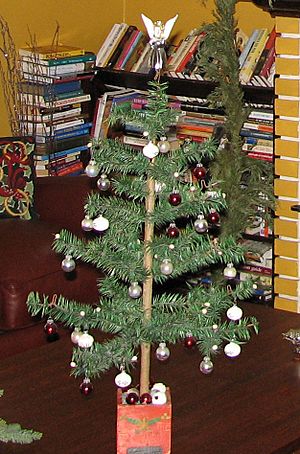Feather Christmas tree facts for kids
A feather Christmas tree is a special kind of artificial Christmas tree. It was one of the very first fake trees used for Christmas. These trees first appeared in Germany in the late 1800s. They became quite popular in the United States in the early 1900s.
History of Feather Trees
Feather Christmas trees were first made in Germany around the 1880s or 1890s. People consider them to be among the first types of artificial Christmas trees ever created. These early fake trees were made partly because people were worried about the environment. There were concerns about too many real trees being cut down for Christmas in Germany, which is called deforestation.
German immigrants brought the idea of feather Christmas trees to the United States. They settled in places like Pennsylvania and Texas. Feather trees became very popular in the early 1900s. Large department stores in the United States sold them.
People liked feather trees for several reasons. You did not have to go to a tree lot to buy one. Also, they did not drop needles all over the floor. Today, old feather Christmas trees are valuable items that people like to collect.
How Feather Trees Were Designed
Feather trees were first made using real goose feathers. These feathers were dyed green to look like tree needles. The feathers were split and then attached to wire branches. These wire branches were then wrapped around a central pole. This pole acted as the tree's trunk.
The branches were spaced far apart. This wide spacing helped to keep candles from starting a fire. It also left plenty of room to hang ornaments. Feather Christmas trees came in many different sizes. Some were as small as 5-centimeter (2-inch). Others were very large, like the 2.5-meter (98-inch) trees sold in department stores during the 1920s. Often, the tips of the branches had fake red berries. These berries were used as candle holders.



